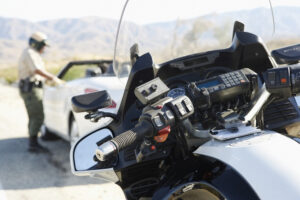An IranAir Boeing 727 came down and broke into pieces near the city of Orumiyeh, killing 77 people on Sunday, Jan. 9. Twenty-eight people, many of who suffered various injuries, survived the crash.
According to Ahmad Majidi, the head of the road and transport ministry’s crisis panel, an IranAir plane departed from Tehran and was heading toward Orumiyeh when “unsuitable weather and bad vision” hindered the pilot’s ability to land.
The airliner was circling the area, after missing its first landing attempt when it apparently lost contact with air traffic controllers at a nearby approach tower.
Iranian officials, who discovered the wrecked aircraft’s black boxes, are expected to conduct a full investigation into the deadly plane crash. Reports suggest the aircraft was delivered to IranAir in 1974 and was the oldest passenger aircraft operating in the country.
Plane Crash Statistics
The annual risk of being killed in a plane crash, for the average American, is 1 in 11 million. Compare that, for example to the annual risk of being killed in a car crash, which for the average American is 1 in 5,000.
You may be surprised to learn over 70 percent of airplane accidents are caused either by pilot error or mechanical failure.
Read about, Ten Plane Crashes That Changed Aviation.
Past Plane Crashes
A US Airways plane, dove into the Hudson River after takeoff from New York’s LaGuardia Airport in January 2009. All 150 people onboard survived.
In February 2009, a Continental commuter plane nose-dived into a home near Buffalo, N.Y sparking a fiery explosion that killed 49 onboard and a person inside the home. The crash happened so suddenly that the pilot didn’t even have time to broadcast a Mayday alert.
A helicopter and plane collided over the Hudson River, killing nine people on the private plane, in August 2009.
In 2008, all 10 passengers of a twin-engine plane died when the Beech King Air A-100 crashed and caught fire near Canyonlands Field airport in southeastern Utah.
Jet Crashes in L.I. Sound
In 2006, a twin-engine Learjet crashed into the Long Island Sound while attempting to land in heavy fog in Groton, Conn. Two of the five people aboard the plane were killed. The two victims who died in the crash were believed to have been the pilots. Following the crash, a lawsuit was filed and handled by Jim Lewis. The settlement is confidential.
The accident was the second in less than three years involving the same type of jet. In August 2003, another Learjet approaching the Groton-New London Airport plowed through several houses and scattered debris after a wing clipped a rooftop. The two pilots were killed.
Safest Seat on a Plane
Popular Mechanics conducted a study in 2007 that examined commercial jet crashes in the United States, since 1971 that had both survivors and fatalities and found the farther back you sit, the better your odds of survival. Passengers near the tail of a plane are about 40 percent more likely to survive a crash than those in the first few rows up front.









Comments for this article are closed.